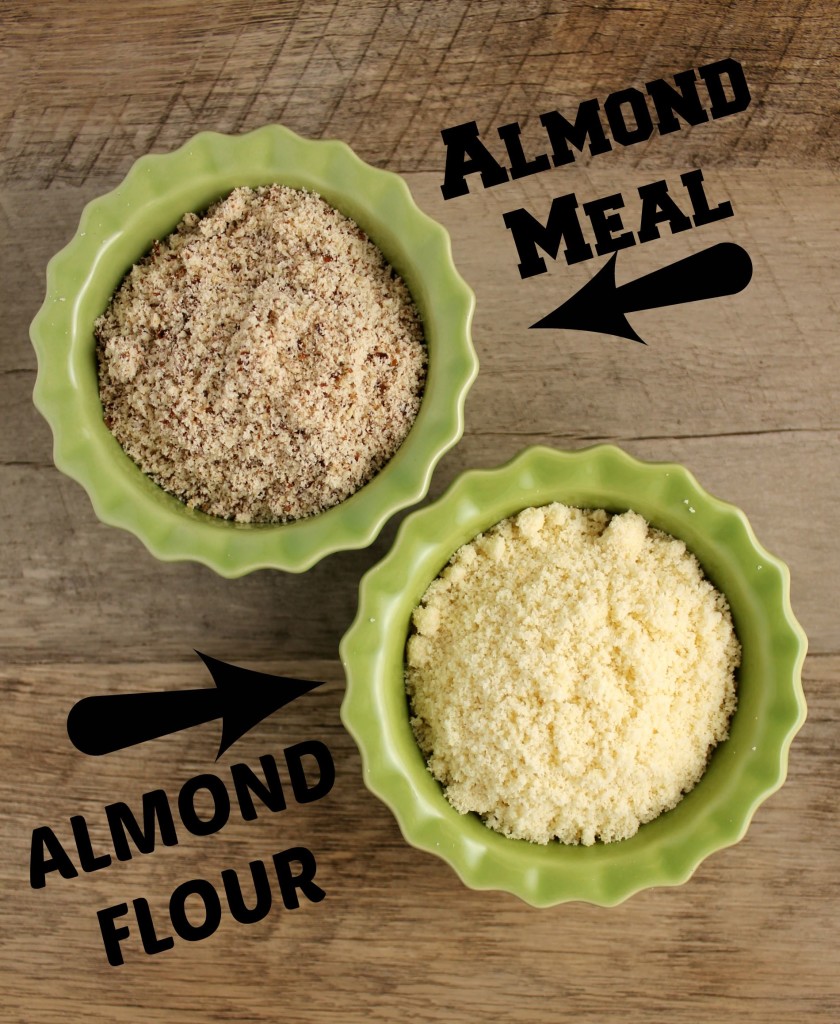Many gluten free bakers and Paleo diet followers use blanched almond flour in their baked goods. I always find this intriguing, but also cost-prohibitive as blanched almond flour is expensive.
Blanched almond flour is almonds without their skins ground up into a fine flour. Almond meal is ground up almonds with their skins on and is a course meal. There is a difference in how the two perform and usually cannot be used interchangeably.
Almond meal is $5.99 for a 16 oz. bag at Trader Joe’s. Almond flour usually runs around $13-15 dollars for a 16 oz. bag. I recently spotted blanched almond flour at Aldi (as a special buy-not available all the time) for I believe $7.99 for a 16 oz. bag.
One great thing about recipes using either almond meal or almond flour is that they are more than gluten free…they are grain free as well, making the baked goods suitable for almost anyone (other than those with almond allergies). Another thing I noticed about recipes using either of these, is that they often do not require a blend. In other words, no mixture of gluten free grains and starches or at least minimal starch. Third, these recipes usually do not have a binder such as xanthan gum in them.
I have several recipes I use almond meal for that I have not yet shared here. And I recently have been playing around with blanched almond flour since I was able to find it at Aldi. In the next post I will share two recipes I found using blanched almond flour that are simply to die for. So keep watch!
Also shared at Allergy Free Wednesday.

I can’t wait to see what you come up with. I have quite a bit of almond pulp leftover from making nut milk. Would you consider nut pulp more like meal or flour?
By the way, I blanch and peel my almonds before making the nut milk. I bit time consuming I know, but worth it! I’ve tried for years to figure out what the macronutrients are in the leftover pulp versus the full almond.
Wow! You are more ambitious than me! I would never attempt to make my own milk so I have no idea what nut pulp is like. I’m guessing it’s probably closer to meal though just because in my head ‘pulp’ brings to mind thick, stringy stuff.
Being a total frugalist, I saved all the pulp from making almond milk when I was doing that a few years ago. I froze the pulp until I had enough to make it worth running the dehydrator. After the pulp was dry I ran it through the Vitamix to get it powdery with the intent of using it instead of commercial “almond flour”. Well, that didn’t go over well. Hubby wouldn’t eat more than the initial piece of whatever-it-was. I’m still trying to use up the pulp (and am buying almond milk so I won’t have pulp to waste) by substituting it in small amounts for the flour in regular recipes. Hubby still notices. Fortunately, my son has been making up recipes for himself and is using up the dehydrated pulp. I think there’s one jar left. 🙂 Hubby won’t eat that either. Anyway, the conclusion I have come to is that the pulp is dry and flavourless because all the fat and flavour went into the milk. It’s definitely not a suitable substitute for almond flour–blanched or otherwise.
I use the pulp in baking but only with recipes that add fat anyway, like tortillas and crackers. They turned out very well and are now staples in my pantry. I also ever so slightly toast my pulp when dehydrating it. 🙂
Yes, looking forward to the almond meal recipes. Recently I made Paleo Peach muffins and substituted almond meal as I did not have almond flour. I thought they turned out great just had more of a grain or texture to them.
In some recipes, either works, but in others, it appears not. I can imagine the meal giving a more “whole grain” feel to it, even though there is not a grain in sight!
Couldn’t you just buy the almond meal and grind it further to make it almond-flour-with-colour?
I guess one could try. 🙂